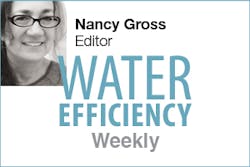Our offices are in California. You can’t get ten steps out of bed in the morning without being drenched with news about the drought. And the latest news that’s hot has to do with wildfires, which are always scary, but not unexpected when there is a lot of brush that is thick, dense, and dried out.
I’ve tried not to overdo coverage of the drought in either my blogs or in the magazine because our readers are living and working all over the country. But drought in recent years is plaguing many regions in the US and around the world.
Our offices are in California. You can’t get ten steps out of bed in the morning without being drenched with news about the drought. And the latest news that’s hot has to do with wildfires, which are always scary, but not unexpected when there is a lot of brush that is thick, dense, and dried out. I’ve tried not to overdo coverage of the drought in either my blogs or in the magazine because our readers are living and working all over the country. But drought in recent years is plaguing many regions in the US and around the world. [text_ad] This video report “How Much of America is in a Drought?” posted by D News (Discovery News) in May, takes a look at dry conditions around the country — California, Oregon, Nevada, Arizona, New Mexico, Utah, Kansas, Oklahoma, Texas, North Dakota, South Dakota, Wisconsin, Montana, even Hawaii—and the reporter remarks, “All this drought and devastation recalls the Dust Bowl of the 1930s, when in 1934, 68% of the country was extremely dry.” [embed width="600" height="390"]https://www.youtube.com/watch?v=Qay6FP8f0yk[/embed] New research is coming up with explanations that go beyond the farming practices of that era, implicating a change in the path of the jet stream on account of warmer surface water patches in the Pacific Ocean in 1934 and 1936. On the other side of the country, similar warming off the coasts of Maine and Nova Scotia contributed to the weather pattern change, and then the dust being dispersed in the atmosphere interacting with these pressure patterns really was a perfect storm…but the kind of perfect we could all do without.This video report “How Much of America is in a Drought?” posted by D News (Discovery News) in May, takes a look at dry conditions around the country — California, Oregon, Nevada, Arizona, New Mexico, Utah, Kansas, Oklahoma, Texas, North Dakota, South Dakota, Wisconsin, Montana, even Hawaii—and the reporter remarks, “All this drought and devastation recalls the Dust Bowl of the 1930s, when in 1934, 68% of the country was extremely dry.”

